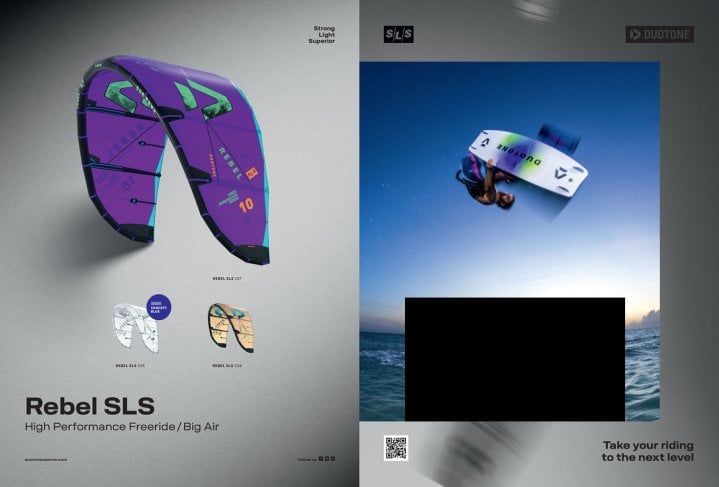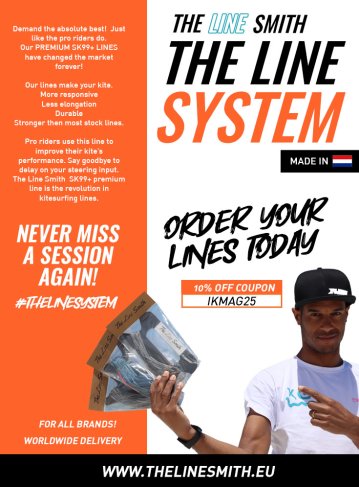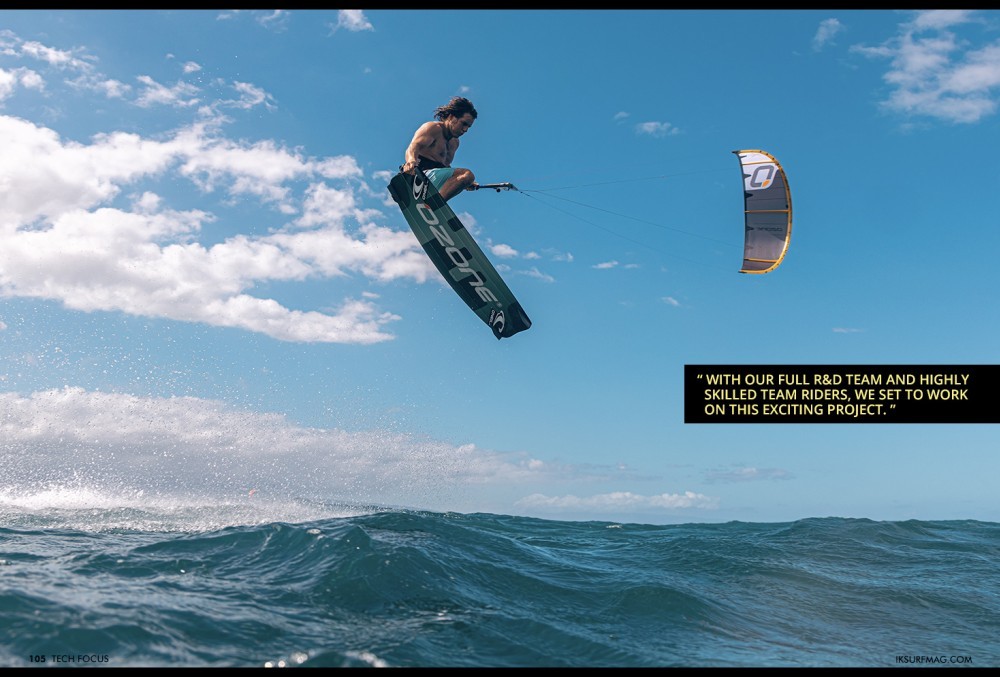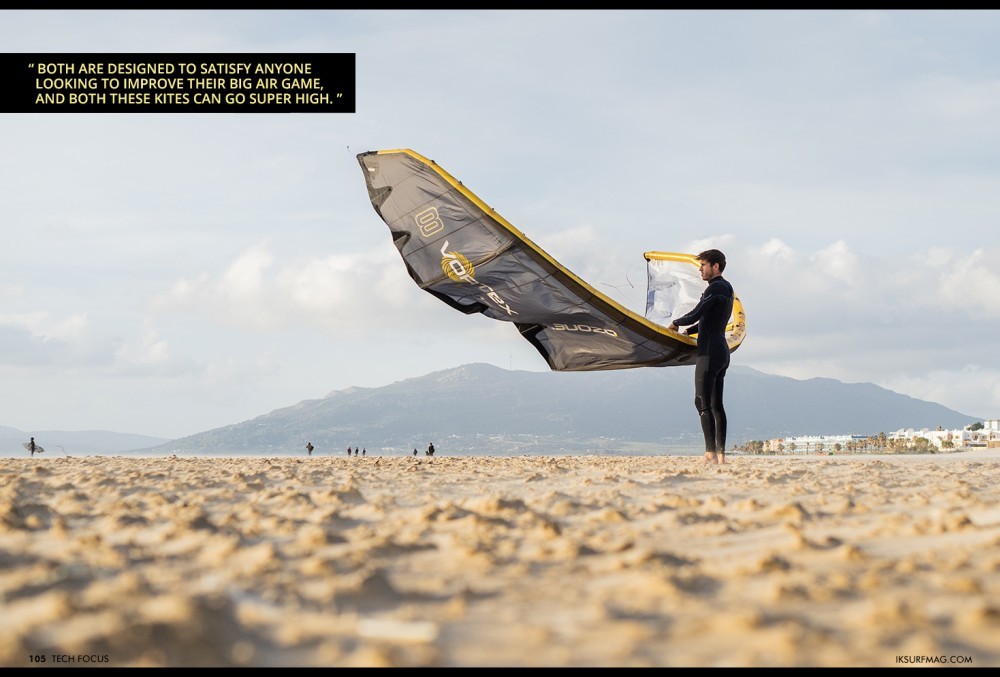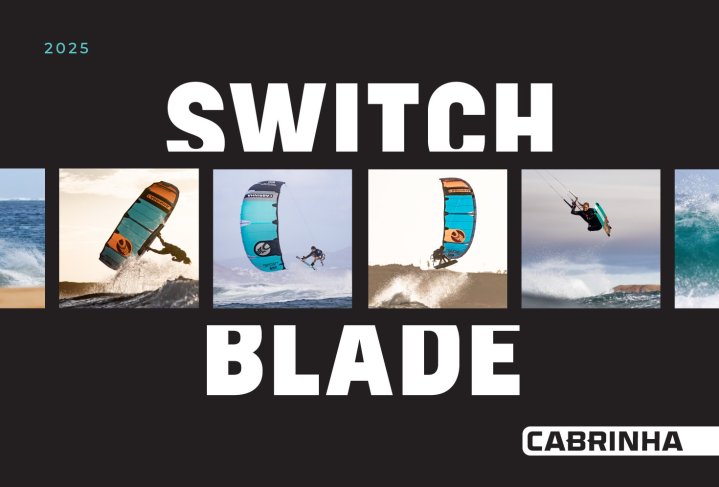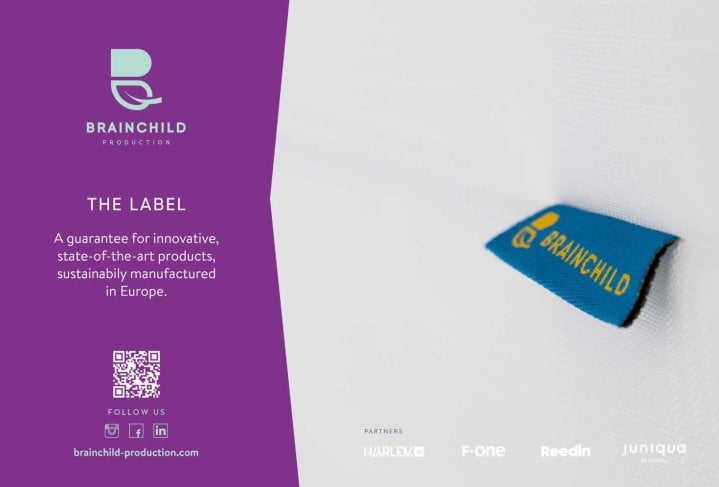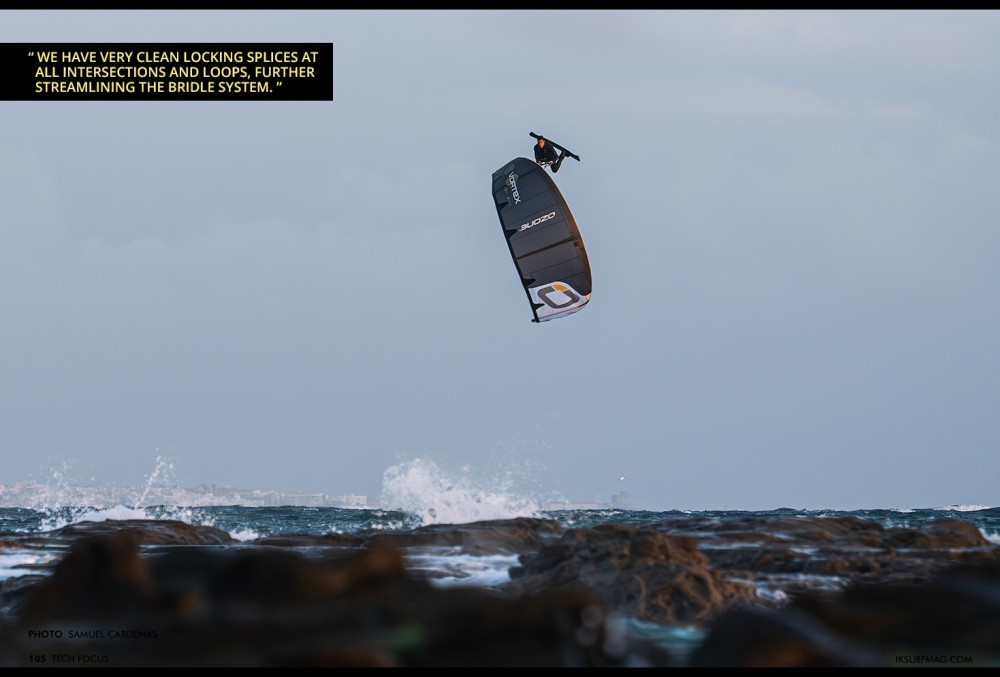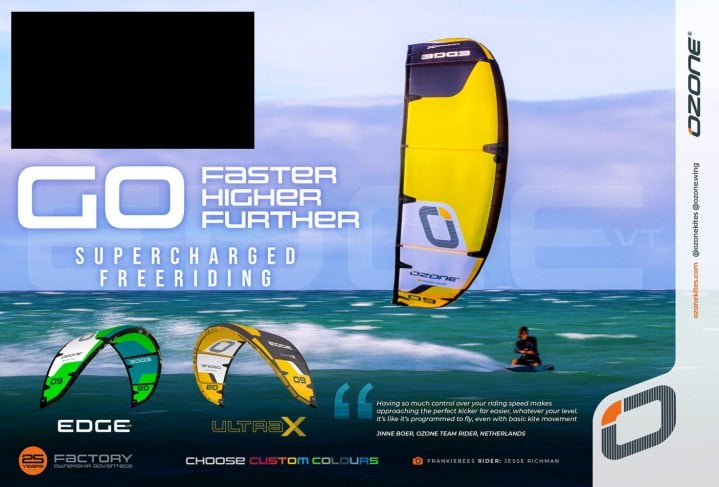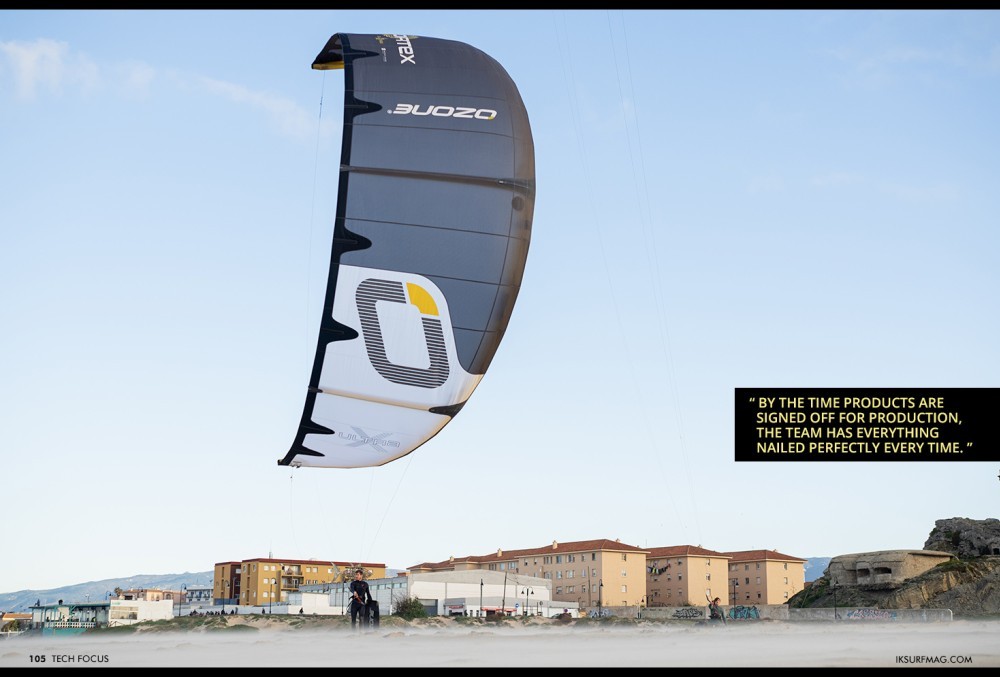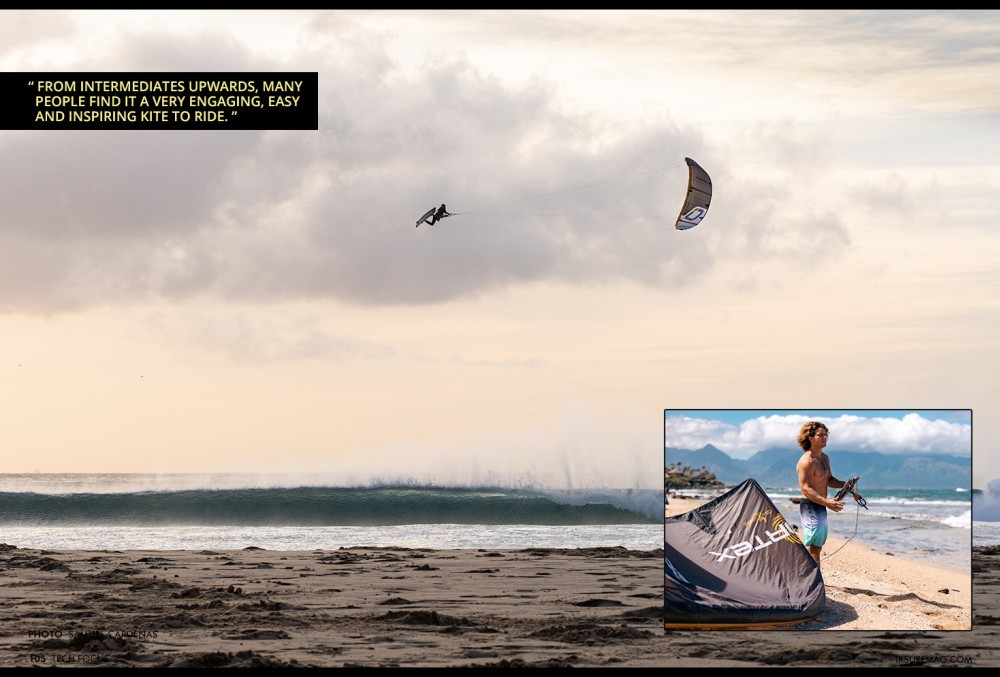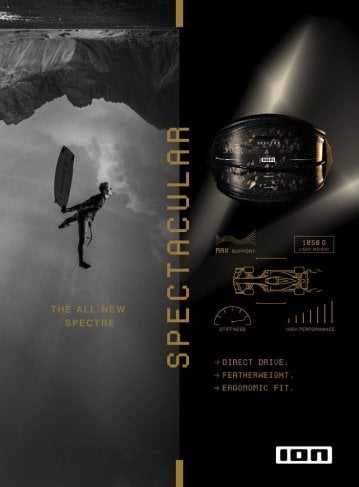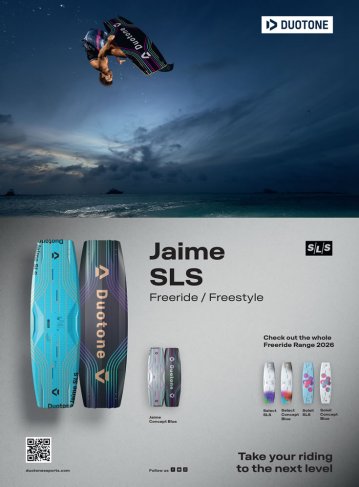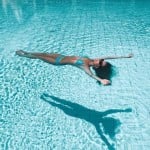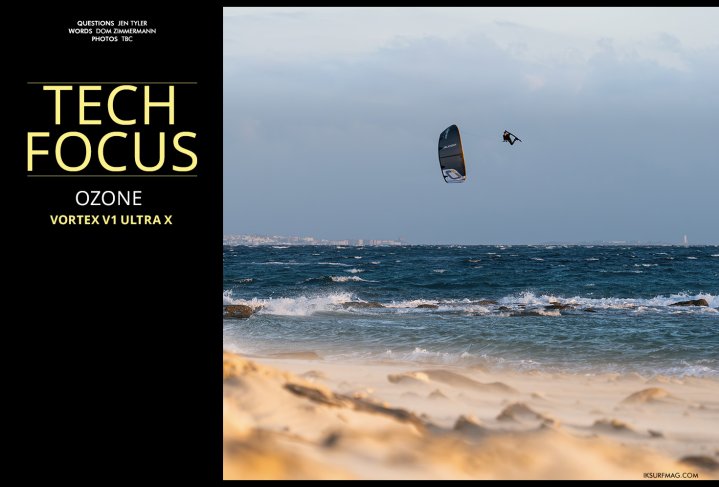
Tech Focus - Ozone Vortex
Issue 105 / Mon 24th Jun, 2024
Ozone head designer Dom Zimmermann tells us about Ozone's newest big air beast, the Vortex Ultra-X. Dom tells us tales of its development and the wide range of riders finding huge benefits in its surprisingly accessible handling.
What was the inspiration and design goal for the Vortex Ultra-X?
The design brief was to create a kite that could jump as high as the Edge but had better-looping characteristics. As with all our top-end models, we had a free hand in material choices with no compromises to costs. With our full R&D team and highly skilled team riders, we set to work on this exciting project.
The Edge has been part of your lineup for a long time, with a storied success in the race and big air scene. Why didn’t you make an Aluula Edge, and why was there the need for a totally new three-strut design?
Just exchanging materials on the Edge wasn’t enough. It was the obvious first try when we started the process in 2022. While just changing the materials alone charged up the Edge’s performance a fraction, it wasn’t enough of a difference. Getting to grips with the Aluula materials, we realised that we had to design a kite in conjunction with it, properly integrating it, not just adding it. A lot of iterations followed, all based on a 5-strut design, as that was the conclusion we drew at the time in order to achieve very high canopy stability in strong winds. It was only later on in the development process when we happened to try a very different direction based on three struts, that we realised we’d found this advantage and greater possibility with refined sail tension, the preloaded leading edge and struts to reach such high canopy stability.
The marketing for the kite is heavily focused on big air, but is it just a big air kite? What else is it capable of, and who should consider buying one?
It is indeed capable of much more than just big air riding. In fact, it’s a great fun, all-round freeride kite for anyone who likes to hoon around on a twin-tip but also on a hydrofoil. Being naturally light due to the three-strut construction and the Aluula airframe, many riders enjoy it in light winds on their foils. Direct handling, with a very crisp and taut canopy, delivers such intuitive control that it’s hard not to enjoy the engaging flying sensations in all sorts of conditions.
What are the main differences between the Edge and the Vortex?
There are big cross-overs between the Vortex and Edge. They are both designed with very clean aerodynamics and taut, efficient canopies, so they both have that crisp Ozone handling. Both are designed to satisfy anyone looking to improve their big air game, and both these kites can go super high.
The Edge is more tuned for that plug-and-play freeride experience, and one of the most overlooked aspects of its performance is just how incredible its easy upwind performance is. It absolutely rockets you upwind and, at the same time, delivers a beautiful amount of sheeting power on tap. For fast and efficient riding sensations, they don’t come much easier or feel as accessible as the Edge. Send the kite back overhead and sheet in, and you can’t fail to get good jumps and floaty hangtime. It is also designed with a more robust Dacron airframe, so is more rugged and can handle more abrasion against the beach, for example. It’s also lower in price.
The Vortex Ultra-X is made of more exotic materials that take a bit more general care to look after, but it delivers a faster response. When directing customers, we basically ask first, “Do you already pull kite loops, or is it something you really want to get into?” If that answer is in any way a “yes”, then we say they’re ready for the Vortex. It loops fast and climbs so reliably up through the window that it’s almost automatic that it will catch you. That performance benefit helps anyone throwing their first loops and those who want to keep pulling the bar for double or triple loops. Beyond that, it’s just an intuitive kite to ride, aided by the 16-point bridle that really puts the rider in superb contact with the kite. The feedback we’ve had from all kinds of rider levels is that it is helping them in so many ways, but primarily with easy improvements to their jumping heights and kite loop confidence. From there, the sky's the limit for session after session progression.
What are the main benefits of having a 3-strut Big Air kite? There seems to be a solid split between 5- and 3-strut kites, although many new designs are switching to three…
The reduced weight of only having 3 struts is obvious regarding mega loops or doubles. The kite has less inertia, so it doesn’t stop through the loop but keeps accelerating, which is one highly liked attribute of the Vortex; no matter how low you pull a loop - the kite will always catch you.
What feature makes the Vortex kite easy to catch after a kite loop?
It’s the combination of everything, but the lighter the kite's weight, the better it will shoot up through the window (with good design, of course). The small diameter LE with 16-point bridle attachment along the leading edge reduces drag, contributing to high speeds and better climb/catch after a loop.
What is the main benefit of the Aluula airframe in the Vortex kite? As you have your own factory, was it hard to train the staff on the new material, and what have you done differently to ensure longevity and durability in the seams?
Using Aluula materials for the airframe gave the design many benefits. It’s stiffer than conventional Dacron, so the kite is more reactive and more stable in nuking wind. Reducing weight obviously helps, as mentioned in one of my previous answers.
As with every new process in the factory, there’s a learning period. However, as designers, we have 100% access to the factory and work with our colleagues in the dedicated prototyping department. So, the prototyping process is when we work on the production processes within the factory so that by the time products are signed off for production, the team has everything nailed perfectly every time. The teams in the factory are highly skilled, some with over 25 years of experience in their field. Alongside the material use, we’re focusing on adding the necessary strength to ensure all areas are strong. Along the LE, every seam is double reinforced to reduce the risk of seam creeping, for example. Once we knew how to work with Aluula materials, it was a pretty straightforward process, but it added additional complexity and labour to the way we built a kite.
What customisation options are available when setting up the kite so the rider can tune the characteristics?
There are two back line settings on the kite. When you receive it, it comes set up on the lighter bar setting, and the bar pressure can be increased using the tab in front. The rider should also play around with different line lengths, as this can change many of the kite’s characteristics.
To finish the point about customisation - don’t forget we offer pretty much all our kites in a range of custom colour options! There’s a custom colour chooser on the web page for each product - you can go wild and get just the perfect colour combo!
How have the sales been so far? Are you guys pleased with the kite reception in the marketplace
We’ve been incredibly pleased by how well the kite has been received. In designing a kite to deliver very high-performance handling for new school big air in strong winds, the responsive connection at the bar, the range and the incredible control it delivers has translated into the kite being very accessible for anyone of a good intermediate level upwards. From intermediates upwards, many people find it a very engaging, easy and inspiring kite to ride. You just get on it and immediately feel ready to send it!
Videos
By Jen Tyler
Italian/Egyptian Jen Tyler grew up on the sandy beaches of the Red Sea and has been on the IKSURFMAG & Tonic Mag team since 2017.


